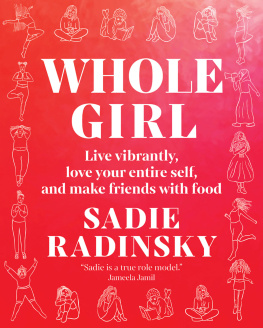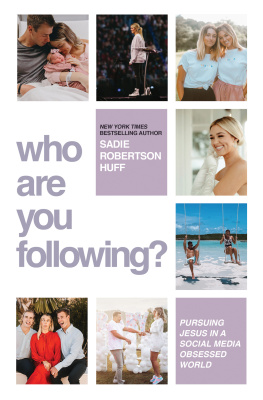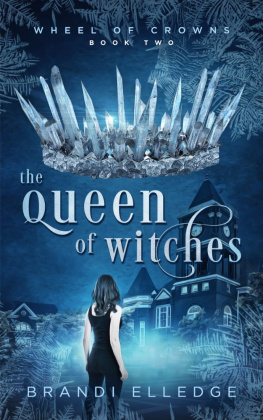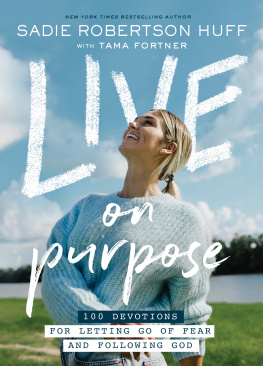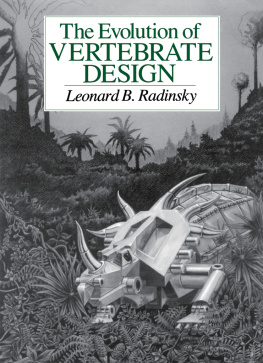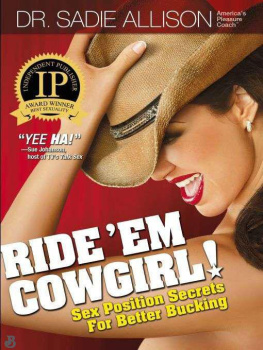Contents
Guide
Page List
Contents
Introduction
We Are All Whole
Y oung women are powerful.
Our brains are bursting with creativity, intellect, and new ideas. We are eager to try new things. We care passionately about issues, from global to personal. We are all different; each of us has completely unique abilities and personalities. We are full of possibility.
All of this terrifies our society. They cant handle us, in all our messy, diverse awesomeness. So they try to break us into pieces and put us in boxes. The messages are relentless: Youre not enough. Youre too much. Be quiet. Dont make waves. Smile. Dont eat too much. Dont be so emotional.
At the same time, manufacturers, media companies, and other corporations profit off our insecurities. They make us feel bad about ourselves to get our money. Youd be happier if you bought that. You need more followers. Buy these clothes; dont wear those. They sell us new phones, diet products, skin-care serums, and everything else under the sun, with a side of shame.
These messages hound us so often that we start to buy into them. We actually believe were incomplete!
But we dont need to accept this madness. We know that were already whole.
In this book, we are going to embrace our whole selvesevery part of usjust as we are. All the messy details. All the power and potential. We can reject societys arbitrary rules by treating ourselves with respect, enjoying food, and relishing this incredible time in life.
What Brought Me Here
The path that led me to write this book started when I was nine years old. Seemingly out of nowhere, I had developed nausea, stomachaches, and fatigue that just wouldnt go away. These symptoms kept me home and out of school for half a year (not the idyllic endless vacation it sounds like!). The worst part was that nobody could figure out what was wrong with me, including the many doctors I saw.
When my mom asked the doctors if food played a role in my issues, or if gluten could be the problem, every one of them said no. I went completely off gluten anyway, as a last resort.
Within two months, all my symptoms were gone.
I went back to school and normal (gluten-free) life. Now that I had witnessed the power of food, I started experimenting with different ways of eating. I found that I felt even better when I ate unprocessed foods and consumed less grains and sugar. I started eating more vegetables, fruits, nuts, meat, and eggs. Now I had more energy than ever before. I felt fantastic.
However, one thing was still missing from my life: desserts. Back then, decent gluten-free treats werent available in stores. But, like they say, necessity is the mother of invention. And I needed treats. So I started inventing my own!
Every day after school, I would rush to the kitchen to concoct new cakes, muffins, and cookies. Baking grain-free desserts became my obsession. I wanted to share that joy with others. So, when I was twelve, I started posting my recipes on a blog I called Whole Girl. As I posted more recipes, the blog developed a following. Soon I was getting messages from people all over the world saying that my recipes had helped them. People were writing to ask me questions and share their stories. I was amazed and inspired.
On the Move
Ive never been super sporty. In fact, Ive never done competitive sports. Ever. But after gaining tons of energy, I wanted to move!
I began exploring different kinds of movement. I decided to try a beginners yoga class at my local studio. I was amazed by how strong yoga made me feelsomething Id never really felt before. The yoga class also had a long period of meditation at the end, which made me feel calm and centered. I began going to yoga regularly and practicing yoga and meditation at home. Now every time I step onto the mat and move through yogaor just sit still and breatheI get in touch with my body and grow closer to myself.


Running always perplexed me. I wondered, why do people ever run by choice? But after doing the dreaded Mile Run in middle-school gym class (and finishing in second-to-last place), I decided I wanted to improve. So I started running half a mile on the hiking trails near my home. Then one mile. I remember crying with frustration when I found out that it had taken me fifteen minutes to run that mile. But I kept going. I eventually worked my way up to five or six miles at a timethat is, between my many ankle sprains and knee injuries.
I tend to get hurt a lot. Every time I broke my foot (once, walking up stairs) or twisted my ankle, I had stop exercising in order to heal. Once I was rehabilitated, I had to start the process all over againback to the most basic yoga poses; back to running one mile, then two. It was frustrating. I got mad at myself for being slow and weak.
But as time went by, I saw how absurd it was to be so hard on myself. I love moving my body because it clears my mind and makes me feel alive. I decided to only focus on that. I vowed not to care about how hard I exercised, or for how long or how fast. I would come from a place of patience and compassion for myself.
This new practice changed the entire way I thought about myself. I beat myself up less. I appreciated myself more.
I wanted to share this approach to exercise with other girls. So I started writing about it on my blog, along with the recipes. I talked about exercising with the motivation of being kind to myself, about learning to quiet the shaming perfectionist in meeven when I wasnt fast or strong. Apparently a lot of people struggle with the same feelings, because women and girls around the world responded, saying that my stories helped them feel less alone.
Growing Up
Meanwhile, I entered teendom. At first it was hard for me to take care of myself amid all the new stress of school and homework. So I began experimenting. I played around with different ways to help my body and mind feel good, such as preparing school lunches for the coming week and finding different ways to get more sleep. I spoke about these tools, and many more, on my website, on social media, in articles for magazines, and on my podcast.
I read messages daily from young women about their experiences with food, exercising, and taking care of themselves. I also share my own experiences and have conversations with people. Its been eye-opening to learn about other peoples perspectives and to create real connections with young women around the world.
Heres the Plan
You know those emotions that society wants us to squelch? Theyre actually our super-powers. They give us focus, energy, compassion, strength.
In this book, were going to rediscover our turbo-charged emotions and use them as rocket fuel to power all different parts of our lives.

